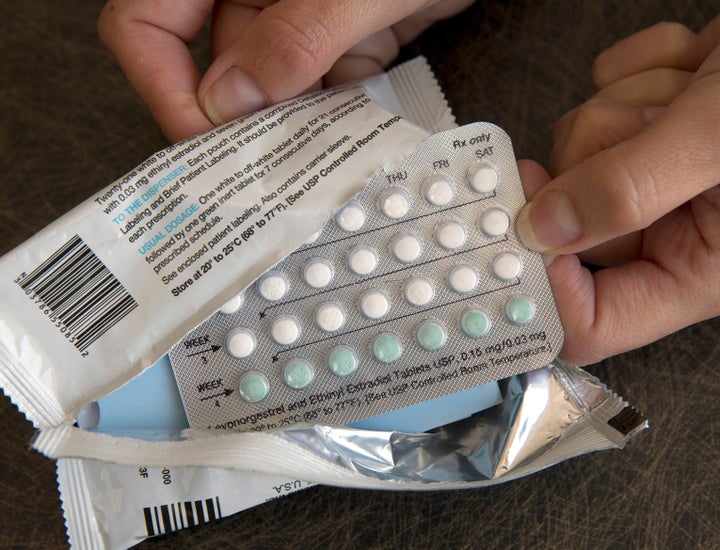
Low-income women are less likely to use the most effective methods of birth control, new research from UBC has found.
The study, published this week in CMAJ Open, found that sexually active women between the ages of 15 and 24 who were trying to avoid pregnancy were more likely to use effective contraceptive options like the birth control pill if they came from households with an income of over $80,000.
“We didn’t ask the question about why people chose to use specific methods, but we do know that more expensive and more effective options were less used in low-income young women,” the study’s lead author Elizabeth Nethery told HuffPost Canada.
Nearly half of pregnancies in Canada are unplanned, according to the Society of Obstetricians and Gynaecologists of Canada, and the majority of those unplanned pregnancies happen in women between the ages of 20 and 29.
Education level is thought to be a factor as well. An American study from 2013 found that women with less education usually have more children, and more unintended pregnancies, than women with higher levels of education.
“The simplest hypothesis is that unintended fertility is higher among the less educated because they do not know about or cannot afford or access contraception or abortion,” the researchers wrote.

The direct costs of unintended youth pregnancies exceed $125 million a year, according to the Canadian Paediatric Society, who said earlier this year they think contraception should be confidential and freely available to anyone under 25.
“Cost is a significant barrier to using contraception for youth in Canada,” the society wrote in a position paper. “Many must pay out-of-pocket because they have no pharmaceutical insurance, their insurance does not cover the contraceptives they desire, or they wish to obtain contraceptives without their parents’ knowledge.”
The UBC study found that 69 per cent of the higher-income group used the pill, versus 53 per cent of the lower-income group. In the higher-income group, 13.3 per cent used just condoms, as opposed to 18.9 per cent of the lower-income group.
Young women who came from households that made less than $80,000 were also more likely to use no contraception at all.
While studies like this one prove correlation, not causation, Nethery says the study causes her to “suspect” that cost is a barrier to birth control access.
Other studies have come to similar conclusions. A 2015 study by researchers at McGill, University of Toronto, and several other universities found cost to be the most significant barrier to contraceptive access, followed by spotty sexual education, physician bias, and limited access to doctors.
Watch: 10 common birth control myths. Story continues after video.
Birth control is covered under some drug plans, but as Nethery points out, it’s typically people in higher income brackets who have access to comprehensive drug coverage. Private insurers that do cover contraception usually only cover 70 to 80 per cent of the cost, which in some cases means the out-of-pocket expenses are still significant.
For young people who do have access to a private plan, the fact that accessing contraception via insurance will notify the primary account holder — typically a parent — can also be a barrier.
And when people have to pay out of pocket for their birth control, the costs are often significant. IUDs are 99 per cent effective — the most effective form of contraception there is — but the cost up front is also pretty high. In most of the country, the copper IUD costs at least $60, while the hormonal IUD can be up to $380.
Depo-Provera, a form of contraception that involves getting an injection of hormones every 12 weeks, is also very effective, but can cost up to $150 per shot. The pill, considered around 91 per cent effective with typical use, can often be about $50 a month. Condoms, meanwhile, are about 82 per cent effective with typical use, and are often sold for about $15 for a box of 10.
“We are one of the few countries that has universal health care, but we don’t have universal access to contraception in terms of cost coverage,” Nethery said.
She added that cost is definitely not the only obstacle to effective birth control.
Some providers can’t prescribe a full range of birth control options, or even counsel people on the effectiveness of the different methods, she said.
Some Canadian doctors have refused to prescribe contraception, stating that it went against their moral values. In rural areas across the country and in most of Quebec, many people don’t have family doctors, so just accessing a prescription is difficult. And the 2015 Canadian study found that sex ed is inconsistent, even within the provinces, and many people aren’t given sufficient information about birth control.
According to Nethery, “we really need to address all the barriers to improve access to the full range of contraception care in Canada.”
Also on HuffPost: